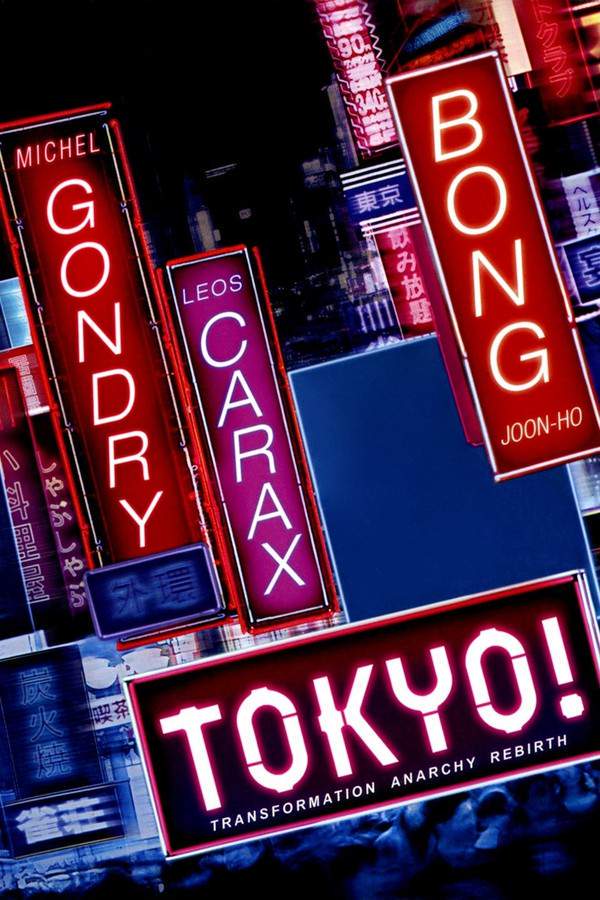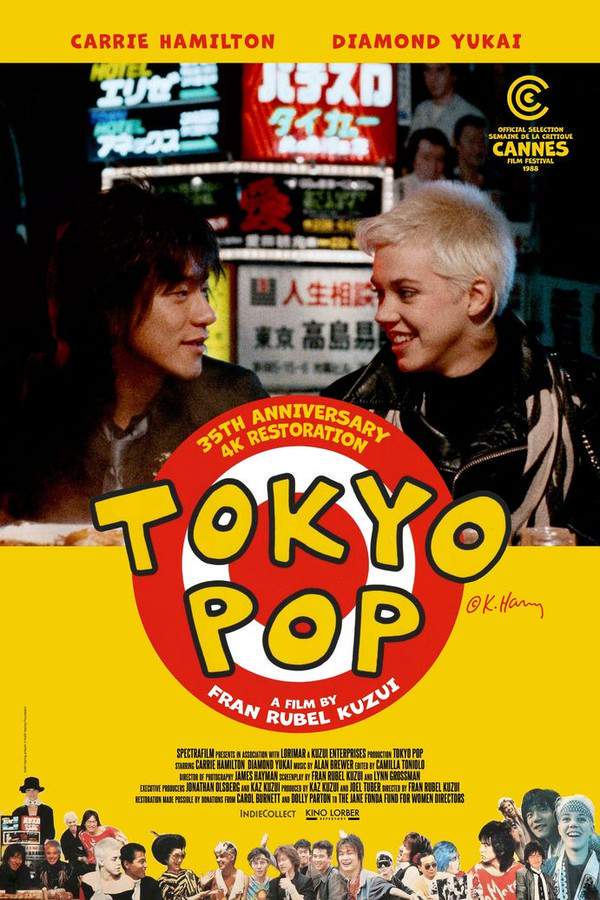Warning: spoilers below!
Haven’t seen Tokyo Chorus yet? This summary contains major spoilers. Bookmark the page, watch the movie, and come back for the full breakdown. If you're ready, scroll on and relive the story!
Tokyo Chorus (1931) – Full Plot Summary & Ending Explained
Read the complete plot breakdown of Tokyo Chorus (1931), including all key story events, major twists, and the ending explained in detail. Discover what really happened—and what it all means.
The film opens with a group of young men under the watchful eye of Omura Sensei Tatsuo Saitō as they drill and test boundaries. Among them is Shinji Okajima Tokihiko Okada, a clever yet mischievous student who keeps pushing the line. His antics spark a blend of humor and friction, and after a moment of discipline, the drills resume and the class eventually graduates, stepping out into a world that feels both familiar and unforgiving.
Adulthood finds Okajima stepping into the routine of work as an insurance salesman, a path that soon reveals the precariousness of the new economy. The office world is a tight, pressure-filled space where margins are thin and security is illusory. A key co-worker, Rou-Shain Yamada Takeshi Sakamoto, is laid off after the grim streak of misfortune—two clients die soon after signing their policies. Okajima’s instinct to stand up for his colleagues triggers a bold attempt to protest at the boss’s office, a maneuver that stirs tension and exposes the fragility of workplace solidarity. In the chorus of voices, one worker Isamu Yamaguchi challenges Okajima to go through with the protest himself, a moment that tests Okajima’s pride, resolve, and sense of responsibility.
When the protest ends in a bitter lesson, Okajima is fired. He leaves the office with a bow that feels both a gesture of resignation and a quiet vow to protect his family. Back home, he brings a scooter as a small consolation prize for his son, a gesture that briefly lights up the home but soon collides with reality: his son Miyoko Hideo Sugawara wants a bicycle, not a scooter, and disappointment shadows the room. Sugako, Okajima’s wife Tsuma Sugako Emiko Yagumo, returns from the market and wrestles with the tension between the need to stay afloat and the desire to preserve dignity for their child. She offers steady, practical counsel—encouraging honesty with their boy and teaching him to cope with setbacks—even as the family scrambles to make ends meet.
The family’s finances are strained so tightly that a kimono, a symbol of their modest middle-class life, must be sold when a medical emergency arises. Miyoko’s illness—a pediatric scare dressed in the language of childhood diarrhea—forces them to borrow courage and money to keep their daughter or son alive and cared for. Okajima insists they will find a way to pay the hospital bill, even suggesting something as humble as summoning a rickshaw to speed them to care. The hospital visit, though brief in relief, underscores the costs of care and the lengths a family will go to for one another. The emotional stakes rise as the family confronts the cold realities of debt and sacrifice in a society where even small health scares can become major upheavals.
A turning point comes when Okajima crosses paths with Omura again, this time outside the classroom and inside a bustling cafe that Omura now runs—The Calorie Café, where curry rice becomes both sustenance and symbol. Omura, a former teacher who shifted into the world of food and business, offers Okajima a temporary job as a banner holder and flyer distribution man. It’s a humbling position, one that sits at the crossroads of pride and necessity, but Okajima accepts for the sake of his family. Sugako, though anxious about the idea of her husband doing work she views as degrading, chooses to stand by him and even accompanies him to the café, where the old classroom camaraderie seems to reappear in a new form of solidarity.
One quiet evening, Sugako, Tsuma, and Omura’s wife Chōko Iida Chōko Iida join Omura and his colleagues in cooking large plates of curry, sharing stories, and weaving a new community around a shared, simple meal. The atmosphere of warmth and mutual support contrasts with the earlier chaos of layoffs and hospital bills, and the small, almost ritual dinner feels like a classroom of its own—a place where lessons about resilience and teamwork emerge in the glaze of curry and conversation. A letter arrives from the Ministry of Education, bringing news that would alter the family’s future: an opportunity for Okajima to teach English in a small rural town at a girls’ school. The news lands with a mix of relief and ambition, a chance to rebuild not only their finances but also a sense of purpose after the many snags of civilian life.
Back at the dining room, the family weighs the decision with humility and hope. The revelation transforms the mood from survival to possibility, and the final student who arrives late becomes a symbolic chorus in their decision to move forward. The scene closes with a celebratory mood—the family, friends, and former students come together in song and gratitude, a testament to endurance and the quiet power of community.
The film’s quiet, patient storytelling honors the everyday drama of ordinary people navigating economic upheaval. It juxtaposes the dignity found in honest labor with the sting of layoffs, blending humor and melancholy to reveal how small acts—an encouraging word, a shared meal, a return to learning—can illuminate a path forward. The performances—centered on Okajima’s earnest struggle to protect his family while preserving his self-respect, and on the warm, sometimes weary wisdom of Omura and Sugako—pull the audience into a world where resilience is forged not in grand gestures but in daily, steadfast choices. The result is a compassionate, lifelong look at work, family, and the ways communities sustain one another when the odds feel stacked against them.
Last Updated: October 09, 2025 at 10:47
Unlock the Full Story of Tokyo Chorus
Don't stop at just watching — explore Tokyo Chorus in full detail. From the complete plot summary and scene-by-scene timeline to character breakdowns, thematic analysis, and a deep dive into the ending — every page helps you truly understand what Tokyo Chorus is all about. Plus, discover what's next after the movie.
Tokyo Chorus Timeline
Track the full timeline of Tokyo Chorus with every major event arranged chronologically. Perfect for decoding non-linear storytelling, flashbacks, or parallel narratives with a clear scene-by-scene breakdown.

Similar Movies to Tokyo Chorus
Discover movies like Tokyo Chorus that share similar genres, themes, and storytelling elements. Whether you’re drawn to the atmosphere, character arcs, or plot structure, these curated recommendations will help you explore more films you’ll love.
Explore More About Movie Tokyo Chorus
Tokyo Chorus (1931) Scene-by-Scene Movie Timeline
Tokyo Chorus (1931) Movie Characters, Themes & Settings
Tokyo Chorus (1931) Spoiler-Free Summary & Key Flow
Movies Like Tokyo Chorus – Similar Titles You’ll Enjoy
Tokyo Sonata (2009) Movie Recap & Themes
Tokyo Godfathers (2004) Ending Explained & Film Insights
Tokyo! (2009) Spoiler-Packed Plot Recap
Tokyo Pop (1988) Ending Explained & Film Insights
Tokyo Trash Baby (2000) Full Summary & Key Details
Adrift in Tokyo (2007) Full Movie Breakdown
Tokyo Friends: The Movie (2006) Detailed Story Recap
Tokyo Profile (1953) Complete Plot Breakdown
Tokyo Story (1953) Full Movie Breakdown
I Graduated, But… (1929) Story Summary & Characters
An Inn in Tokyo (1935) Plot Summary & Ending Explained
Record of a Tenement Gentleman (1947) Spoiler-Packed Plot Recap
Passing Fancy (1933) Full Movie Breakdown
Human Comedy in Tokyo (2008) Full Movie Breakdown
Tokyo Lullaby (1997) Film Overview & Timeline


















